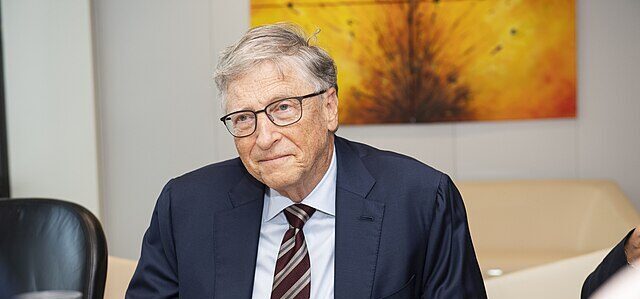4 min read
August 18, 2023
In “A Spirituality of Fundraising,” Henri Nouwen reorients our approach to fundraising, reappraises the donor-fundraiser relationship, and reinforces my commitment to giving where I work.
Outside of our church, the largest beneficiary of my family’s (admittedly modest) charitable giving is the organization for which I raise funds. My reasoning for doing so is simple: If I’m going to ask others to give in support of a cause, I should be supporting it myself. If this practice strikes you as odd, you would be well-served by giving Henri Nouwen’s A Spirituality of Fundraising a read.
Much that is written about fundraising—including by yours truly!—regards the best practices of our craft. Drawing upon data and observation, these contributions are undoubtedly useful. But there is an art to fundraising—a space for the virtue of prudence—that an overreliance on empirical tools risks obscuring. In A Spirituality of Fundraising, Nouwen challenges us to stretch beyond this default empirical frame. In doing so, he suggests a different paradigm for fundraising and the donor-fundraiser relationship, primarily by reorienting our thinking in three critical and mutually reinforcing ways.
1. Donors and fundraisers share a common purpose and meet on the common ground of God’s love.
Fittingly, given how Nouwen wishes to reorient our approach to fundraising, he argues that fundraising itself is a call to conversion for both giver and receiver—to loosen the grip of our inherent desire to be independent and secure, thereby transforming how we relate to our material resources (more on this in point three). Crucially, this common purpose and common ground transcend your specific organization and cause. From Nouwen’s Christian perspective, the common purposes are to grow in holiness and advance the Kingdom of God. The only sure foundation for these pursuits is the common ground of God’s love. These broader commonalities reframe conversations between donors and fundraisers in fundamental ways, as we’ll see with point two.
2. There are profound symmetries to the donor-fundraiser relationship.
Christians are called to show no partiality in the church, for God has “chosen those who are poor in the world to be rich in faith and heirs to the kingdom” (James 2) and the church is one body with many members (1 Corinthians 12). The donor and the fundraiser have thus been tasked with fulfilling distinct roles in advancing their common purpose. Many a young fundraiser, myself included, has wondered why a donor would ever want to meet with them. This anxiety stems from a conviction that the donor-fundraiser relationship is inherently asymmetrical: the donor is bringing money to the table, while the fundraiser brings . . . what, exactly? Perhaps a few donors truly do enjoy meeting new people, but more realistically, donors recognize that the relationship is more symmetrical than it seems.
Your job, then, is to determine what they lack that you can provide. Remember: They want to support your cause! That’s a good place to start. After all, your organization can advance your shared cause in a way that an individual cannot. Yet Nouwen is careful to note other, non-organization-specific examples. In many cases, he was able to draw upon his own, spiritual wealth to aid those endowed with material wealth with anxieties specific to their station. God’s love provides a foundation for people to fulfill distinct roles in advancing a shared purpose, which nourishes a united community of love and invites individual participants to be faithful to their own unique callings.
3. Donors and fundraisers alike must evaluate their relationships to money.
No less a fundraising expert than the Notorious B.I.G. pinpointed one additional way fundraisers can serve their donors: mo’ money, mo’ problems. Indeed, being blessed with material wealth comes with its own challenges, made worse in a culture that often demonizes the wealthy. Scripture is rife with passages that back this up—rich men squeezing through needle’s eyes, condemnations of the rich for exploiting the poor, and so on. As noted above, a fundraiser can offer donors support through these peculiar challenges.
Yet to offer this support, the fundraiser must first examine his own relationship to money, as one need not be wealthy to view money improperly. Nouwen then goes further: A fundraiser must order his own relationship to money properly before asking anyone to give (that is, not only those with their own fraught relationship to money). Most urgently, we must displace money as the guarantor of security, independence, and a person’s value. (“Personal worth,” he observes, can refer either to one’s financial assets or to their value as a human being.) For Nouwen, this relationship explains why discussion of money is one of the most closely guarded taboos in our society. It also elucidates one reason why the donor-fundraiser relationship so often feels asymmetrical: The fundraiser envies a donor’s ostensible security, independence, and value.
If a fundraiser reorients his own unhealthy relationship to money, he can lead a donor into the same freedom—a conversion from the false view that money can guarantee security, independence, and value to a true one that centers on Christ. With common ground and purpose, distinct roles to play in advancing a shared cause, and a healthy outlook on material wealth, the taboo around money talk quickly disappears. Having dispensed with these barriers, we can, in Nouwen’s words, “make our own limited and very conditional love the gateway for the unlimited and unconditional love of God.”
After outlining this new paradigm for fundraising and the donor-fundraiser relationship, Nouwen invites us to return to the cave and consider—and maybe even rethink—some “best practices.” Though I had not yet read Nouwen when I adopted the practice, I submit that giving to one’s own organization is an excellent practice. Doubtless there are many others. I encourage those who have read this far to share theirs in the comments section below.
Credit:Source link



